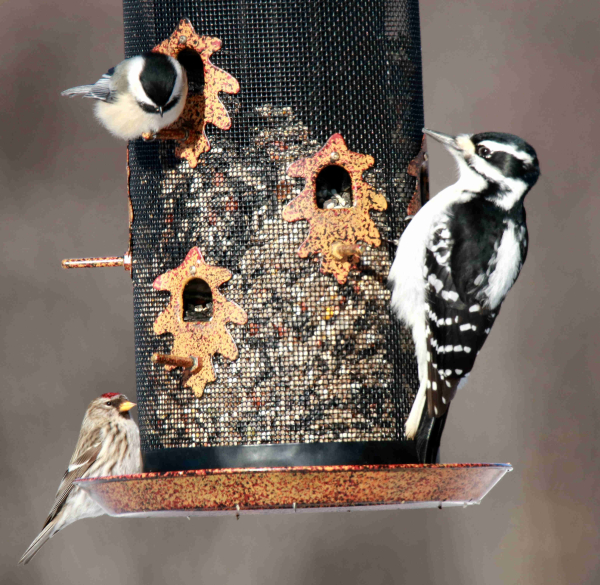Cougar Confirmed in U.P.
June 21, 2010
The Department of Natural Resources and Environment today announced it has reviewed a Menominee County trail camera picture of an animal thought to be a cougar. Although the image is blurred, the photo is consistent with a cougar.
On June 11, DNRE Wildlife Technician Bill Rollo received a call reporting a trail camera picture that appeared to show a cougar. The photo was taken on May 26 near Wallace in the Upper Peninsula.
Rollo immediately went to the area to conduct a field investigation and verify the photograph location. The information Rollo collected was shared with the DNRE’s trained cougar team, and the consensus was reached that the photo and supporting documentation indicated the animal was a cougar. The image is blurry, especially around the head, but other characteristics of the animal are consistent with a cougar.
“This is the first confirmed cougar picture in Menominee County. We appreciate the cooperation of the caller who shared the photograph and contacted the DNRE,” said DNRE wildlife biologist Kristie Sitar, who is a member of the DNRE’s cougar team. “Other landowners who believe they have evidence of a cougar on their property, such as tracks or a kill site, are encouraged to contact their local DNRE field office as soon as possible, which allows staff to investigate before the evidence is compromised. Without good evidence, such as verifiable photographs or tracks, confirmation becomes increasingly difficult.”
Cougars, also known as mountain lions, originally were native to Michigan but were thought to have been extirpated around the turn of the last century. The last known wild cougar taken in Michigan was killed near Newberry in 1906. The Menominee County photograph represents the latest in a series of track and photo verifications of cougars in the Upper Peninsula. Since March 2008, five sets of tracks and two trail camera pictures have been verified in Delta, Chippewa, Marquette, Schoolcraft and now Menominee counties. The origin of the animal or animals is unknown. There have been no confirmations of breeding activity of cougars in Michigan in recent years.
Established cougar populations are found as close to Michigan as North and South Dakota, and transient cougars dispersing from these areas have been known to travel hundreds of miles in search of new territory. Characteristic evidence of cougars include tracks, which are about three inches long by three and a half inches wide and typically show no claw marks, or suspicious kill sites, such as deer carcasses that are largely intact and have been buried with sticks and debris.
Reports of cougar tracks and other evidence should be made to a local DNRE office or by calling the department’s 24-hour Report All Poaching line at 800-292-7800. If a citizen comes into contact with a cougar, the following behavior is recommended:
– Stop, stand tall, pick up small children and do not run. A cougar’s instinct is to chase.
– Do not approach the animal.
– Try to appear larger than the cougar. Never take your eyes off the animal or turn your back. Do not crouch down or try to hide.
– If the animal displays aggressive behavior, shout, wave your arms and throw rocks. The idea is to convince the cougar that you are not prey, but a potential danger.
– If a cougar attacks, fight back aggressively and try to stay on your feet. Do not play dead. Cougars have been driven away by people who have fought back.
Cougars are classified as an endangered species in Michigan. It is unlawful to kill, harass or otherwise harm a cougar except in the immediate defense of human life. For more information about the recent cougar photo, call Kristie Sitar at 906-293-5131 or Adam Bump at 517-373-9336. To learn more about cougars and how to identify their tracks, go online to www.michigan.gov/dnrcougars.






